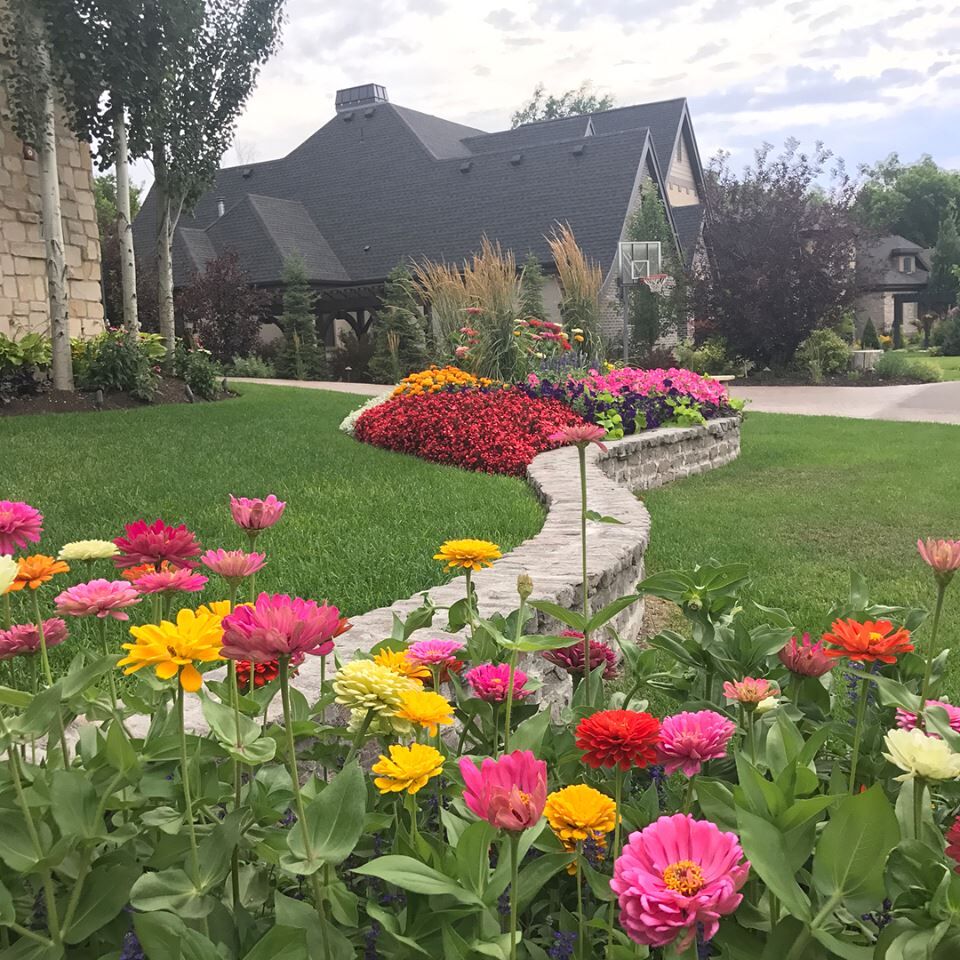
Last month, we discussed some basic design tips for planning your flower beds. If you missed part 1 of this series, check it out here. This month, we have some logistical tips to help you improve your garden design even more. Consider some of our suggestions below to amp up your garden and avoid logistical snafus.

When it comes to plant placement, be sure to pay careful attention to how tall your plants are expected to be. If you choose taller flowers, try to keep them 2 or more feet away from walkways and patio edges to avoid making these spaces feel too crowded. In addition, if you plan to have thorny plants in your garden, try to avoid placing them in high-traffic areas. Otherwise, opt for thornless varieties of those plants.
You’ve chosen a space for your garden, but is that space over any pipes or cables? This is an important question to consider prior to planting. Locate all pipes and utilities if you need to dig trenches deeper than 18 inches for your garden. Your municipality may offer a service to find your underground lines for a minimal fee.
Now that you’ve selected your plants for your garden, it’s time to look at the placement more carefully. Each variety of flower requires a different amount of space to grow properly. Consider each plant’s needs when planning out your garden. While it can be tempting to plant flowers close together to create a denser look initially, that can lead to your plants being cramped as they grow which can ultimately harm them. Also remember that certain plants tend to “take over” garden space such as verbena. Plants like these are good at self-sowing and need additional space or extra maintenance to avoid choking out other plants.
Do you hope to add a water feature to your garden at some point? Will you be needing irrigation? Perhaps electrical for lighting? While you might not be considering these options at this point, it is beneficial to think of water and electric prior to settling on a garden plan. It is much easier to install electrical conduit and irrigation piping now regardless of current plans (just remember to keep them 18 or more inches below ground). Wiring and piping can easily be installed in the future if you decide to go that route, and you’ll be glad you laid down the groundwork now rather than later when you don’t have to rip up all your plants.
If you plan to put a pathway through your garden, carefully select your surface. Try to avoid loose or slick surfaces. Materials such as some outdoor tiles or polished granite can be extremely slippery in wet climates. Gravel and other stone surfaces can provide more traction and serve as a good alternative. Regardless of the material you choose, be sure that the path surface is slightly sloped to help prevent water from pooling. In addition, be sure to make your paths wide enough for easy passage.
Again, it is crucial to take note of the height of your plants and the location when planning your garden. If your garden will be near your driveway and you’ve opted to plant taller flowers, be sure the plants won’t obstruct your view to safely exit your driveway.
At Aeroscape, we have experienced staff ready to help you with any of your landscaping needs – including garden design. Call us at (801) 567-2383 or click on our Contact an Expert green arrow on any page of our website to get in touch with us today.